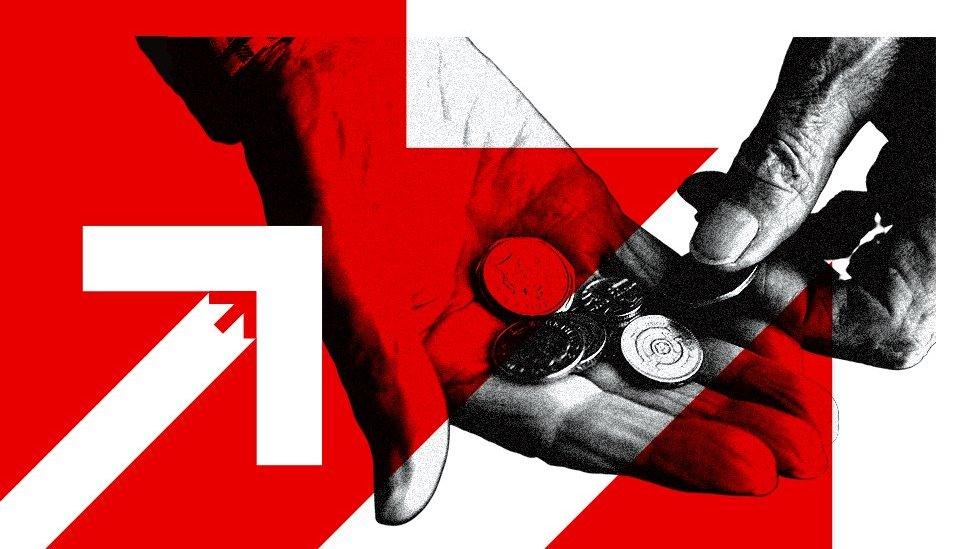NI pay growth may be matching inflation - HMRC figures
- Published

Pay growth in Northern Ireland may now be matching or outstripping the rate of inflation, official figures suggest.
The data from HMRC shows typical monthly pay in September was ┬Ż2,097, up by 6.7% compared to the same month last year.
The UK's main rate of inflation in August was 6.7% - the September rate will be published on Wednesday.
When inflation is rising more quickly than wages it means 'real pay' is falling.
In other words, when prices are going up faster than pay then people's standard of living is declining.
Unions point out that many workers have received smaller pay increases than the average, particularly in the public sector and there has been widespread industrial action over pay.
Last week, Stormont's Department of Education (DE) said it was "simply unaffordable" to give teachers a pay rise within the current education budget.
It said a 5% pay increase for teachers would cost about ┬Ż62m.
The department's budget has been cut and it said it is already ┬Ż300m short of what it needs this year.
Unlike their counterparts in other parts of the UK, teachers in Northern Ireland have not had a pay rise for nearly three years.
'Nominal' or cash pay in Northern Ireland has increased by more than 20% since March 2020, but high inflation will have meant 'real pay' for many people will have been flat or falling.
The average increase across the UK since March 2020 has been 22.6%, with the increase in NI the lowest of all the UK regions.
Related topics
- Published17 October 2023
- Published22 March 2023